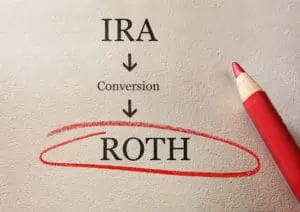With Maeve home from college last weekend, the girls’ thoughts turned to the approach of Halloween. With just a few weeks left, costumes for Halloween were top priority. Sure, they may not trick-or-treat any longer but what teenager can resist a good costume party? So once they’d landed on their disguise of choice, it was time to shop. But being on the typical college student’s budget and having less discretionary income to spend, Maeve decided they would bargain hunt for the items they needed. She and the twins decided – wisely, in my opinion – that they didn’t need to part with a small fortune for a generic, prefabricated costume and would make their own instead for much less. It just wasn’t worth the extra money to them.
This got me thinking. I got thinking about how some of the people I meet with who have lived through the last 2 market crashes (think the early 2000’s, and 2008). Many of them lost a huge portion of their retirement savings during those downturns. Some had to delay retirement, while others went back to work to try and re-build their nest egg. And many of them realized they had to make some dramatic changes to their discretionary and even basic spending habits, fearing another crash could happen again soon.
Let me wrap some context around this; I recently met with a nice, hard working couple, John and Maggie, who came in looking for advice on protecting their savings. John is a successful, self-employed electrician here on the Cape and Maggie helps John with the business. They’re in their late 50’s and have worked hard their whole lives to save for retirement and save for their kids’ college and weddings. And now they are looking forward to a retirement where they can enjoy the occasional night out for dinner and a movie without stressing about every penny spent.
But after losing a “boatload of money” in 2008 – their own words – they feel like their income is just too stretched. At the end of the month, after paying all of their bills, they don’t seem to have much left over for savings. And worried that there could be another market blunder on the horizon, they are looking for ways to protect themselves better for the next one.
They’ve been trying to cut back where they can, even on the smaller day-to-day purchases. John mentioned that he isn’t thrilled about one of these changes in particular . . . Maggie now buys generic toilet paper! “She may as well just buy sandpaper. Even my kids are all over her!”, John says. Maggie simply shrugged and said, “You have to save where you can!”
Now, buying name brand toilet paper wouldn’t set this couple back to the point of disrupting their future retirement plans, but Maggie’s response to 2008 isn’t uncommon. Folks, Maggie’s spending decisions are a symptom of their larger problem. Maggie and John have less money to spend, and they are not alone.
Look, savvy consumers save where they can. No one loves a bargain more than me. My friends from high school still tell me that I am their only friend who still has his First Communion money, so I get it. What can I say; I am a saver.
But there is one place where we are all spending more: healthcare. Healthcare spending has skyrocketed over the last ten years, jumping 44 percent per person across all major healthcare categories, and they are expected to continuously rise over the next decade . Sure, many folks get subsidies to help defray these costs but unfortunately John and Maggie, like so many self-employed folks, don’t qualify for any subsidies.
Maybe John and Maggie can get by skimping on toilet paper, but healthcare is another story. Their $1,825 per month premium and $8,500 deductible is just killing them. Assuming that they meet their deductible, this couple will spend over 28,000 bucks this year.
To make matters worse, some health insurers have either pulled out of the Obamacare exchanges, or significantly restricted access to certain types of care and providers. Three years ago, Aetna, Anthem, Humana and UnitedHealth Group scaled back or actually left the exchange because they weren’t able to effectively manage the costs of sick patients signing up for coverage. And nearly three-quarters, or 72% of health plans remaining in the exchange market have narrowed their networks to restrict doctor and hospital choices to their lists of providers.
“Network design is one tool plans use to keep premiums low,” said Elizabeth Carpenter, senior vice president at Avalere. “However, in addition to monthly costs, consumers need to consider whether a plan covers their preferred doctor or hospital before choosing an insurance plan.”
The majority of average-income households now spend more on healthcare than any other cost, besides housing. Get this, according to the latest U.S. Bureau of Labor Statistics report, the average American household spent 8 percent of their total average household income on healthcare. Out of this total expenditure for health care, almost 70 percent was spent on health insurance.
And for retirees, the math gets more complicated. For most people, the government deducts Medicare Part B payments from Social Security checks. In 2020, the Social Security Cost-of-Living Adjustment (COLA) will be 1.6%, just slightly more than half of the 2.8% COLA seniors saw in 2019. For the average beneficiary, that translates into an extra $23.50 per month, and that’s without a Medicare Part B premium increase getting in the way.
A scary thing about healthcare costs is that they are generally unaffected by an economic downturn. While folks may spend less of their discretionary income on elective procedures during recessions, the actual costs of healthcare tend to remain steady. And, in fact, research by the American Academy of Family Physicians noted both an increase in patients with major stress symptoms and even new health problems developing because patients were skipping preventive healthcare measures.₄ If the economy resets, which historically occurs every 6 or so years, and financial returns drop, the cost of healthcare will remain high.
So, what does all of this mean for John and Maggie? What does this mean for you? Well, some believe in a single payor system, and we may hear more creative ideas like this being tossed about as the 2020 election nears; I’m not sure that would fix the problem. I have some ideas, but that is a topic for another column.
One thing I know for certain is this. John and Maggie’s investment strategy (and yours) is more important than ever. Costs that are unaffected by market downturns, such as healthcare costs, highlight the need to address market volatility, and have a plan in place to help mitigate it . . . especially for those nearing retirement or in retirement.
So, a question for you, Cutter Family Finance faithful. Is your investment plan designed for this? Do you have one? Or is generic toilet paper soon to be the least of your worries?
Folks, now is the time to have that discussion, just like John and Maggie did. Otherwise you’re going to want to make sure you have enough in the bank to pay for your premiums, and your deductible . . . and maybe some sandpaper if you have an inappropriate retirement system. After all, it can be scary to face retirement without a plan, no matter what the season.
Be vigilant and stay alert, because you deserve more!
Have a great week.
Jeff Cutter, CPA/PFS is President of Cutter Financial Group, LLC, an SEC Registered Investment Advisor with offices in Falmouth, Duxbury, Mansfield & Southlake, TX. Jeff can be reached at jeff@cutterfinancialgroup.com.
This article is intended to provide general information. It is not intended to offer or deliver investment advice in any way. Information regarding investment services is provided solely to gain a better understanding of the subject of the article. Different types of investments involve varying degrees of risk. Therefore, it should not be assumed that future performance of any specific investment or investment strategy will be profitable. Market data and other cited or linked-to content in this article is based on generally-available information and is believed to be reliable. Cutter Financial does not guarantee the performance of any investment or the accuracy of the information contained in this article. Cutter Financial will provide all prospective clients with a copy of Cutter Financial’s Form ADV 2A and applicable Form ADV 2Bs. Please contact us to request a free copy via .pdf or hardcopy. Insurance instruments offered through CutterInsure, Inc.






